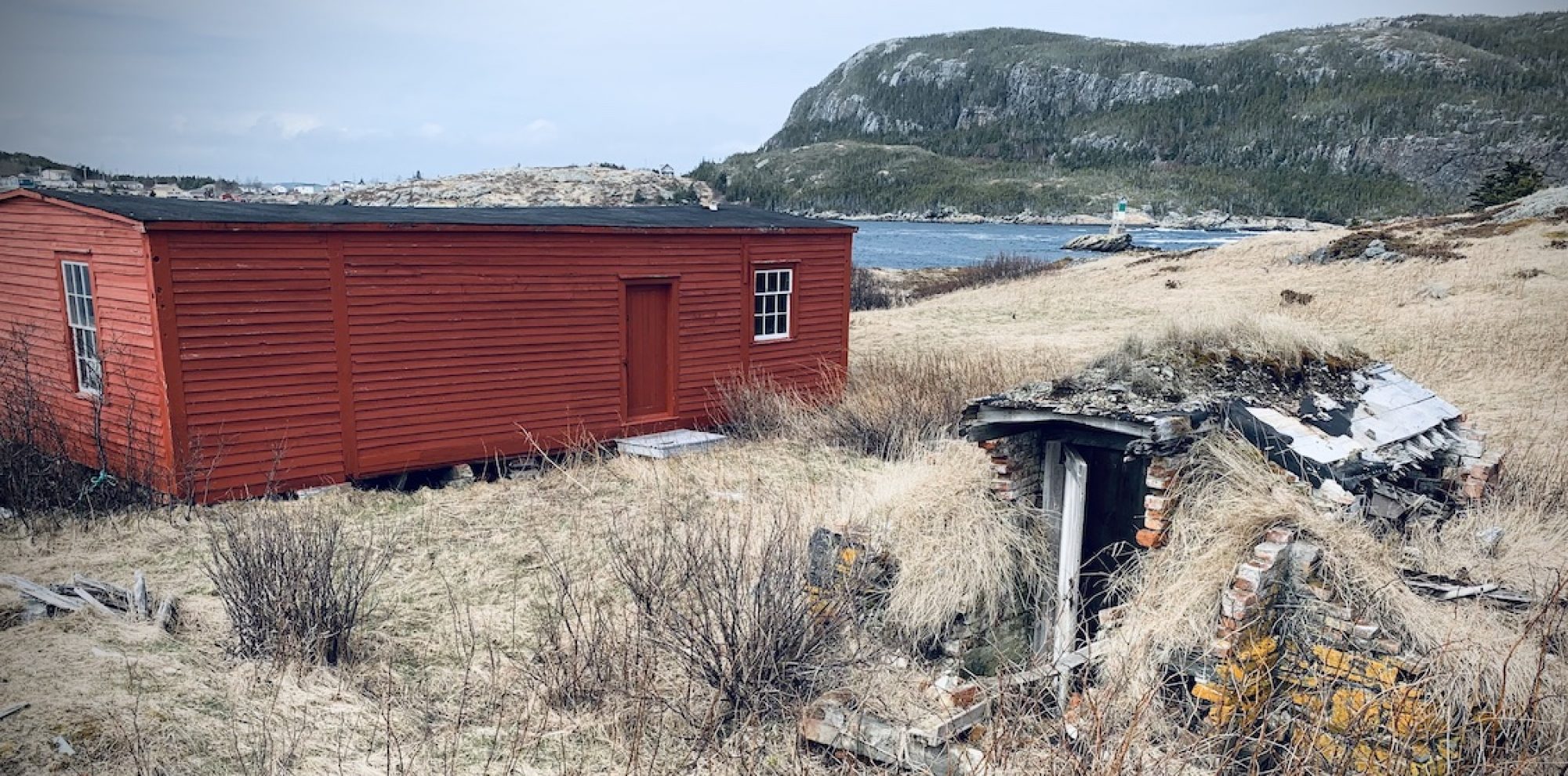There’s food to be found in the woods, ponds, fields and bogs of Newfoundland, if one takes the time to look. And why wouldn’t one? Any excuse to get outdoors is better than none. However, I will go with no excuse, as well. Being outside and in the woods brings me a sense of peace that I get nowhere else.
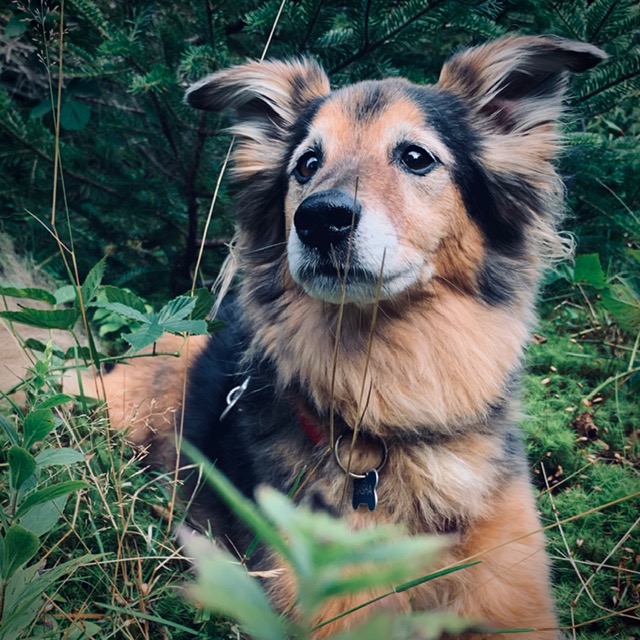
This weekend past, we drove up the coast to explore the scenery and trails of our island on a beautiful late summer day. We happened upon yet another old trail that we wanted to investigate and so we leashed the dogs, grabbed our backpacks and started out on a little hike. About 100 metres into the tree-canopied trail, we came across a few bright yellowish orange mushrooms popping up from the moss on the sides-chanterelles! Yum! I picked some of them, put them in the backpack and we continued on, only to find more and more the farther in we got. What a great find. Not only were we out in the woods, exercising ourselves and our dogs, we were also finding food! I love it when that happens.
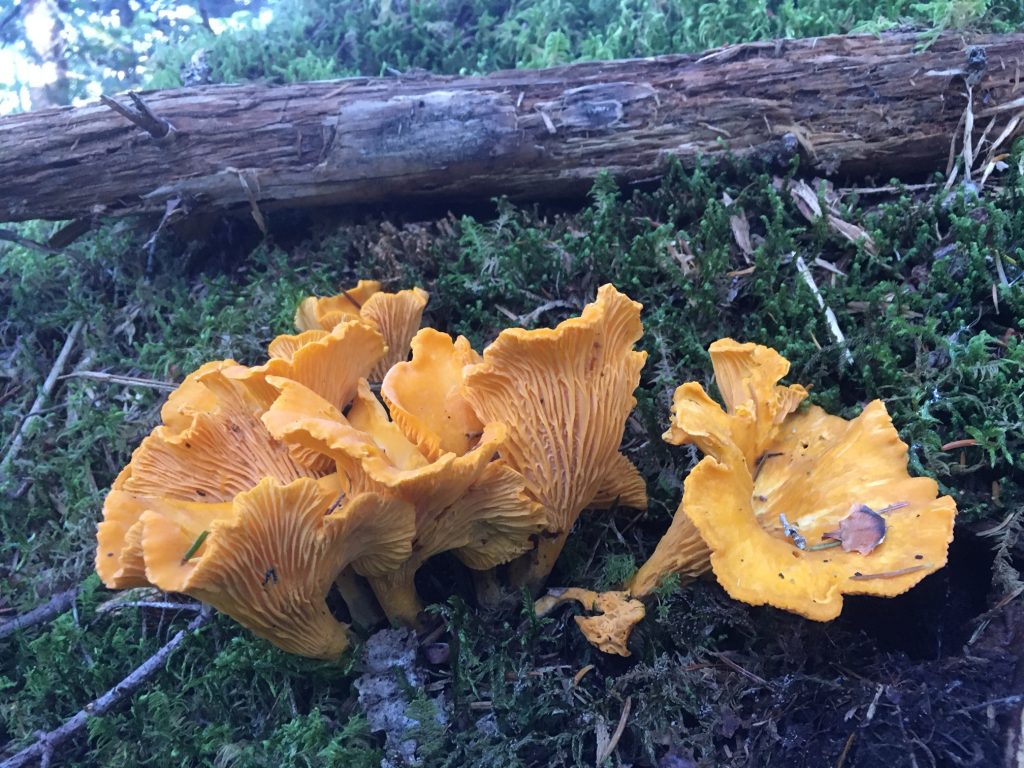
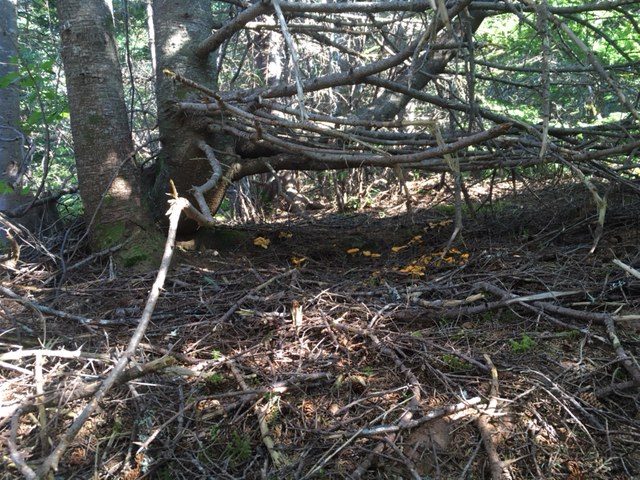
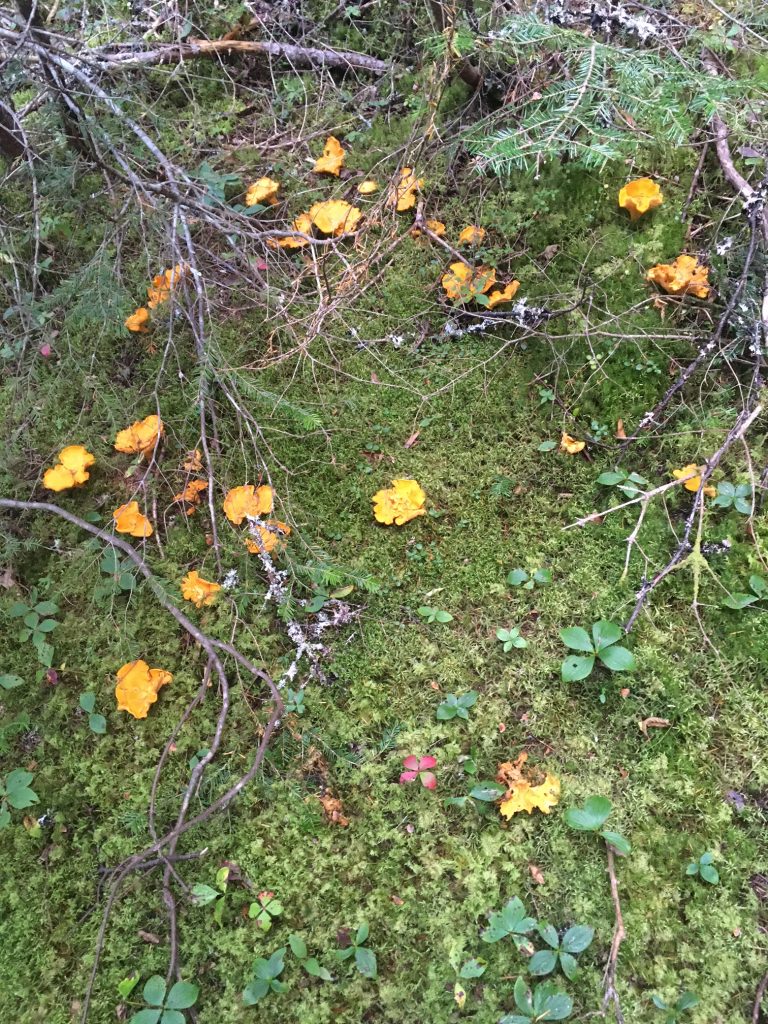
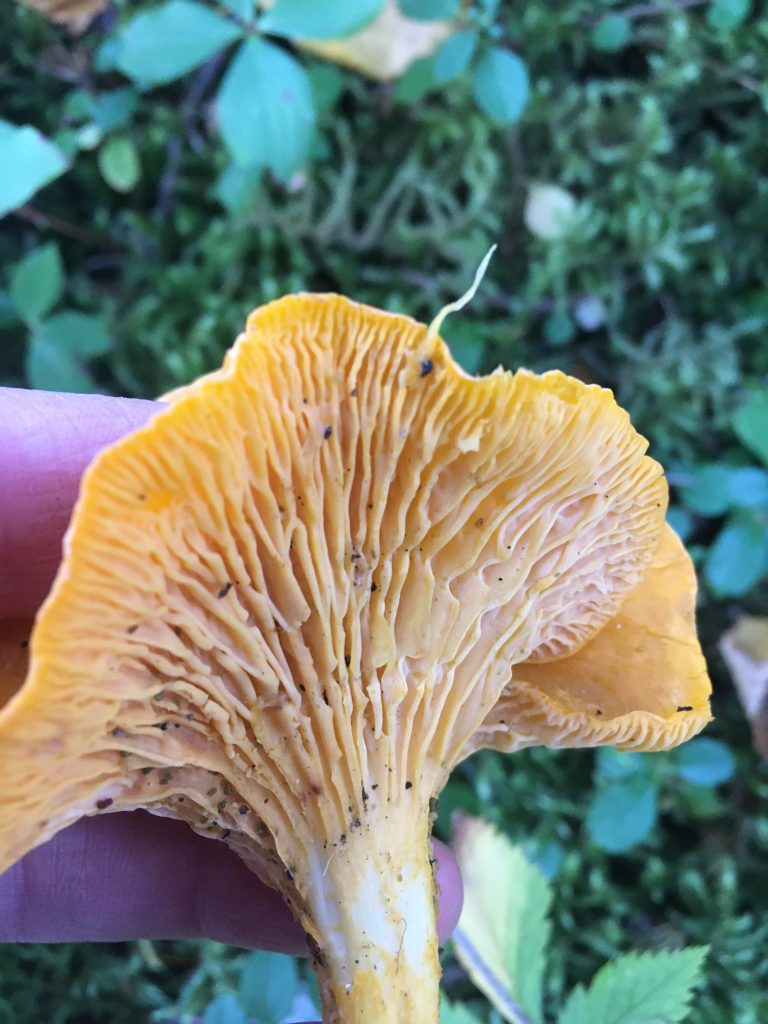
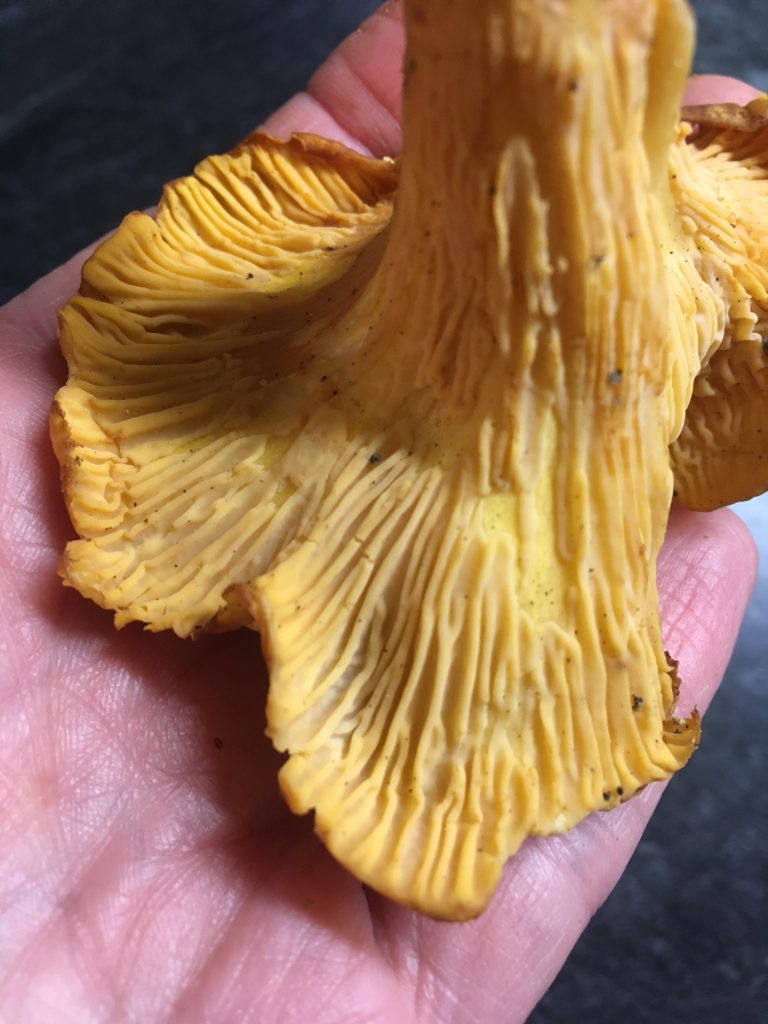
Chanterelles are considered a delicacy in many parts of the world. Luckily, we have plenty of them in Newfoundland! They are usually found in and on the sides of trails in dry needles (like the picture above) or in moss. There are some distinguishing features such as the yellow-orange colour and the fact that the gills are decurrent (or run down the stem). As well, the gills are called ‘false’ gills, meaning they are difficult to pick off the cap, look like they are somewhat pressed onto the cap (almost like veins) and fork in different directions, especially as they go out towards the edge of the cap. True gills are separated and easy to remove individually. As well, chanterelles will peel apart like string cheese, and although I have never found it, some people say they smell like apricots.
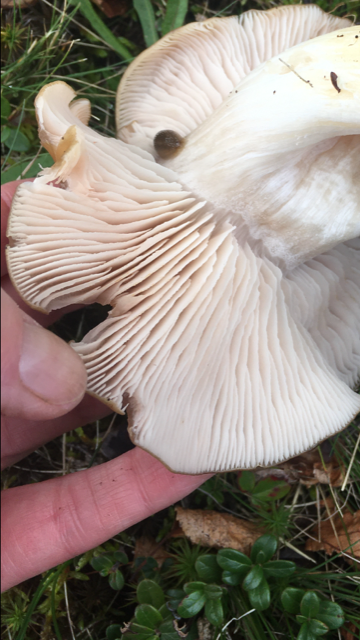
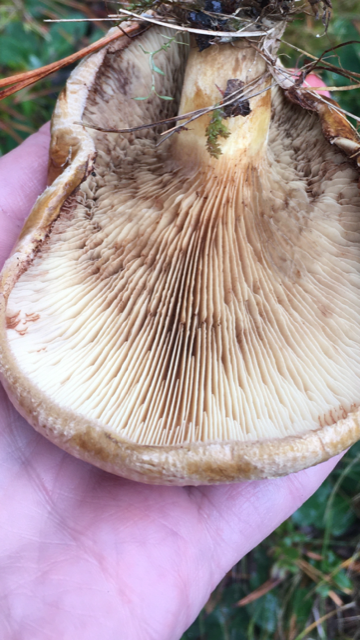
There are a couple of look-alikes in the chanterelle world- the Jack o’lantern and the False Chanterelle, Hygrophoropsis aurantiaca. I have never come across the Jack o’lantern here, but have seen plenty of pretty little falsies. The false chanterelle is generally two tones, with a deeper orange colour at the centre of the cap. The gills are also true ones.
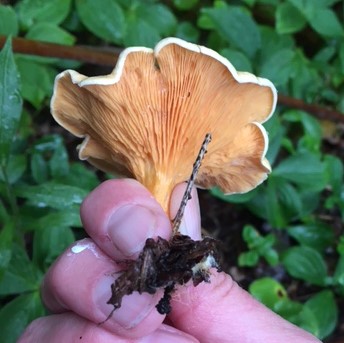
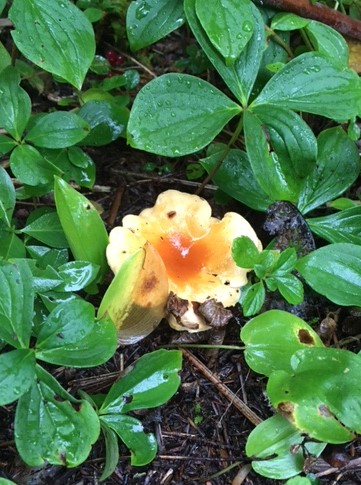
When all was said and done and we were back home, we discovered that we had foraged a little over three pounds of the delicacies in that trail. Just imagine how many trails like that are out there and how many pounds of chanterelles are produced each year!
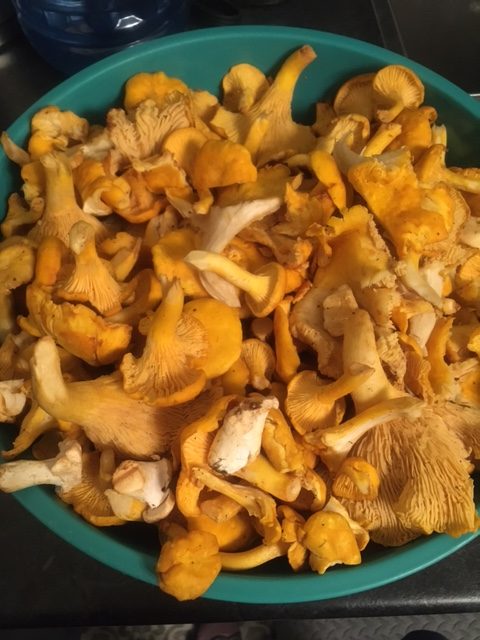
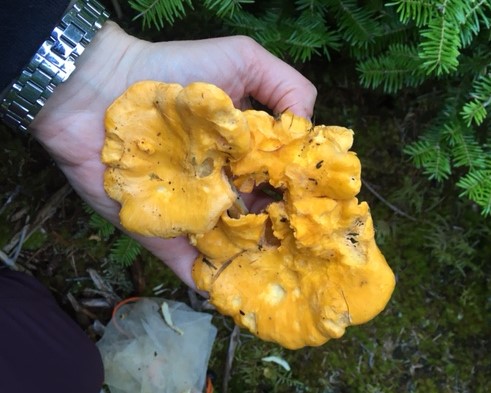
There are so many uses for chanterelles. Because I love pickles, pickling chanterelles is one of my favourite ways to enjoy them. These pickles could be added to a charcuterie board or put on a cracker with some cream cheese, but I just eat them straight out of the bottle. Because I couldn’t find a recipe that suited me, I made up my own and it’s really good. You won’t be able to stop eating them…
